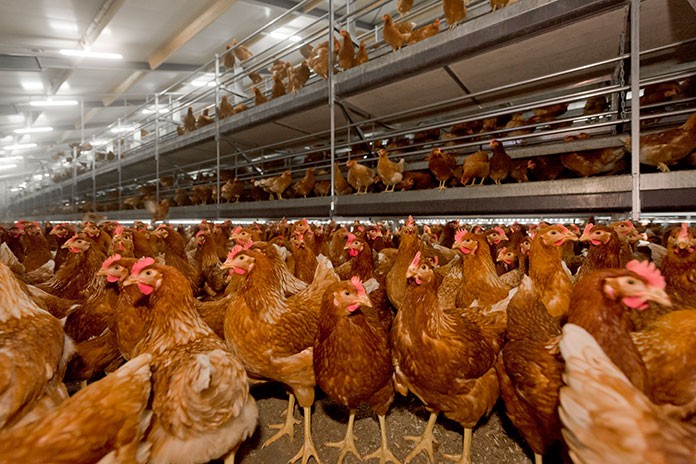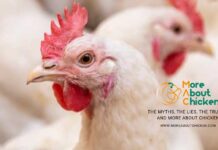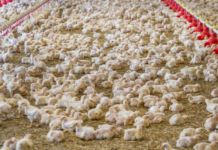
The phosphorus (P) requirement of laying hens is an area of on-going debate and it is a factor that contributes to hen performance and egg quality, especially late in the laying cycle.
Part of the uncertainty regarding P requirements is the basal diet fed in experiments and the variable amounts of phytate P in the diets. For these reasons, industry formulates diets to contain 4.0 to 4.5 g/kg of non-phytate P (NPP). The experiment described below was conducted to evaluate the effects of different levels of non-phytate P (NPP) and phytase on egg production and eggshell quality of hens from 51 to 80 weeks of age. A total of 480 Hy-Line brown egg laying hens were housed in 6 bird cages in a controlled environmental (22-24° C) shed with 16-hour lighting regimen. There were 8 experimental diets and each diet was fed to 10 replicate cages with measurements recorded from 51 to 80 weeks of age.
The experimental diets were based on a sorghum and wheat blend and contained the same levels of calcium (42 g/kg diet), phytate-P (2.6 g/kg diet) with graded levels of NPP (1.5, 2.5, 3.5 and 4.5g/kg diet) with or without phytase (450 FTU/kg). Egg production and defective eggshells were recorded daily.
Feed intake, bird body weight, egg weight, and egg shell quality (shell breaking strength, shell weight and shell thickness) were measured every four weeks. Egg production from 51 to 80 weeks was 79% per hen housed. There was no significant effect of NPP concentration and phytase on egg production. Phytase, however, numerically improved egg production of layers fed the diet containing 1.5 g/kg NPP. There were no significant differences between treatments with regard to eggshell defects. However, birds on the diets containing the higher dietary NPP level (4.5g/kg both with and without phytase supplementation) tended to produce a higher proportion of eggs with defective shells but these differences were not significant.
Numerically, the body weights of layers on the diet containing 1.5g/kg NPP were lighter (P > 0.05) than the other treatment groups. Dietary NPP levels and phytase had no effect (P > 0.05) on feed intake, feed conversion ratio, egg weight or shell weight. Shell breaking strength and shell thickness tended to be lower in layers fed diets containing 4.5g/kg NPP with phytase supplementation compared to birds fed diets with lower NPP levels.
The results indicate that egg production and egg shell quality parameters in layers fed diets which contained 1.5 g/kg NPP were comparable to hens fed diets containing higher NPP levels with or without phytase supplementation; and suggest that dietary NPP requirement can be substantially reduced. The NPP requirement results obtained in this study refer to one dietary scenario and there is a need to determine bird responses to diets containing different levels of Ca.
From the proceedings of the Australian Poultry Science Symposium.

















